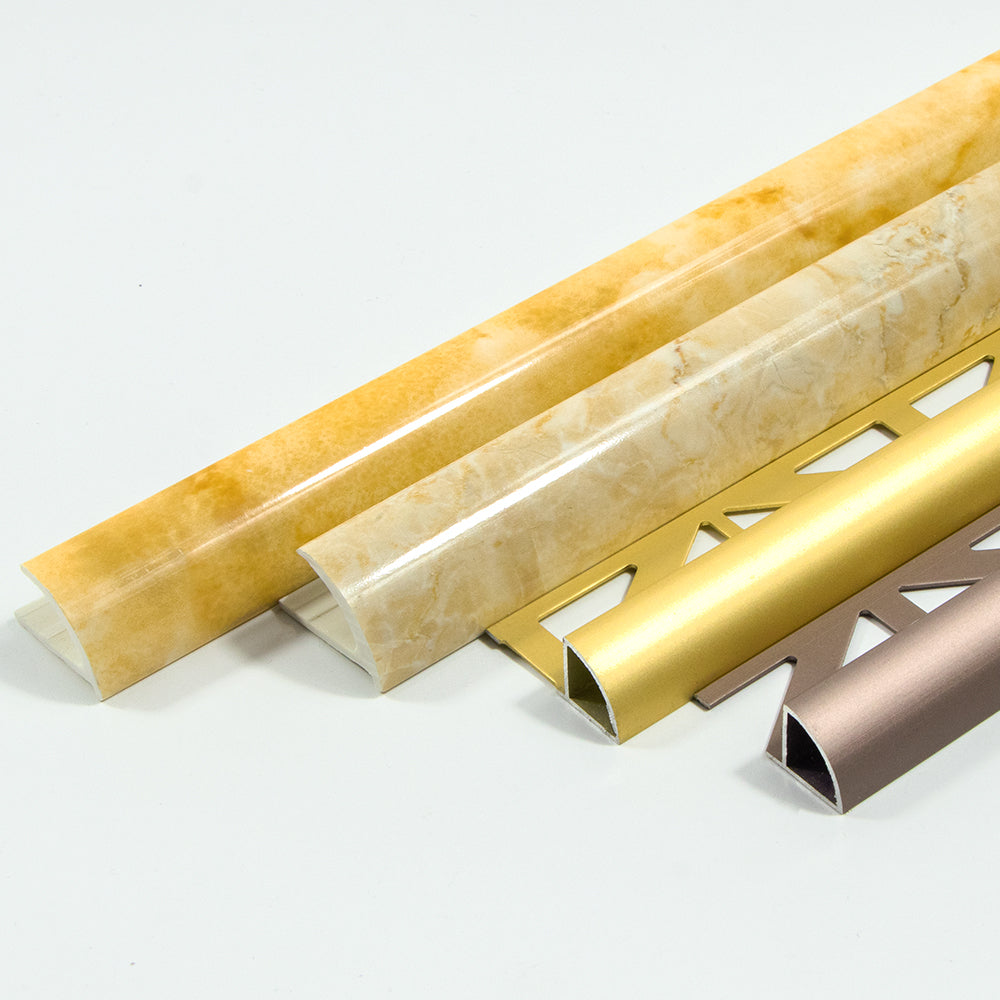What is tile trim and why is it important?
Tile trim is an essential component in any tiling project. It not only adds a finishing touch to the edges of tiles but also provides protection against chipping and cracking. Tile trim also helps to create a clean and professional look by covering the exposed edges of tiles.
Types of tile trim
There are several types of tile trim available in the market, each serving a specific purpose. Here are some of the most common types:
1. Metal tile trim

Metal tile trim is a popular choice due to its durability and sleek appearance. It is available in various finishes, such as stainless steel, aluminum, and brass. Metal trim adds a modern and elegant touch to any tile installation.
2. PVC tile trim

PVC tile trim is a cost-effective option that is easy to install. It is available in a wide range of colors and finishes, making it suitable for various design styles. PVC trim is resistant to moisture and can withstand high humidity areas, such as bathrooms and kitchens.
3. Ceramic tile trim
Ceramic tile trim is made from the same material as the tiles themselves, ensuring a seamless and cohesive look. It is available in a variety of shapes and sizes to accommodate different tile thicknesses and designs.
4. RongYi tile trim

RongYi tile trim is a brand that specializes in providing innovative solutions for tile installations. Their trim profiles offer both functional and decorative benefits, such as edge protection, transition solutions, and design accents.
Factors to consider when choosing tile trim
When selecting tile trim for your project, there are a few factors to keep in mind:
1. Material
Consider the material that best suits your needs and design preferences. Metal trim offers a sleek and modern look, while PVC trim is more affordable and versatile.
2. Color and finish
Choose a color and finish that complements your tiles and overall design scheme. Consider whether you want the trim to blend in or stand out as a decorative element.
3. Profile
Select a trim profile that matches the style of your tiles. There are various profiles available, including L-shaped, round, and square, each offering a different aesthetic.
4. Installation method
Consider the ease of installation and whether you require a trim that can be installed after the tiles or during the tiling process.
Conclusion
Choosing the right tile trim is crucial for achieving a professional and polished look in your tiling project. Consider the different types of trim available, such as metal, PVC, ceramic, and Schluter, and evaluate factors like material, color, profile, and installation method. By selecting the best tile trim for your needs, you can enhance the durability and aesthetic appeal of your tiled surfaces.

